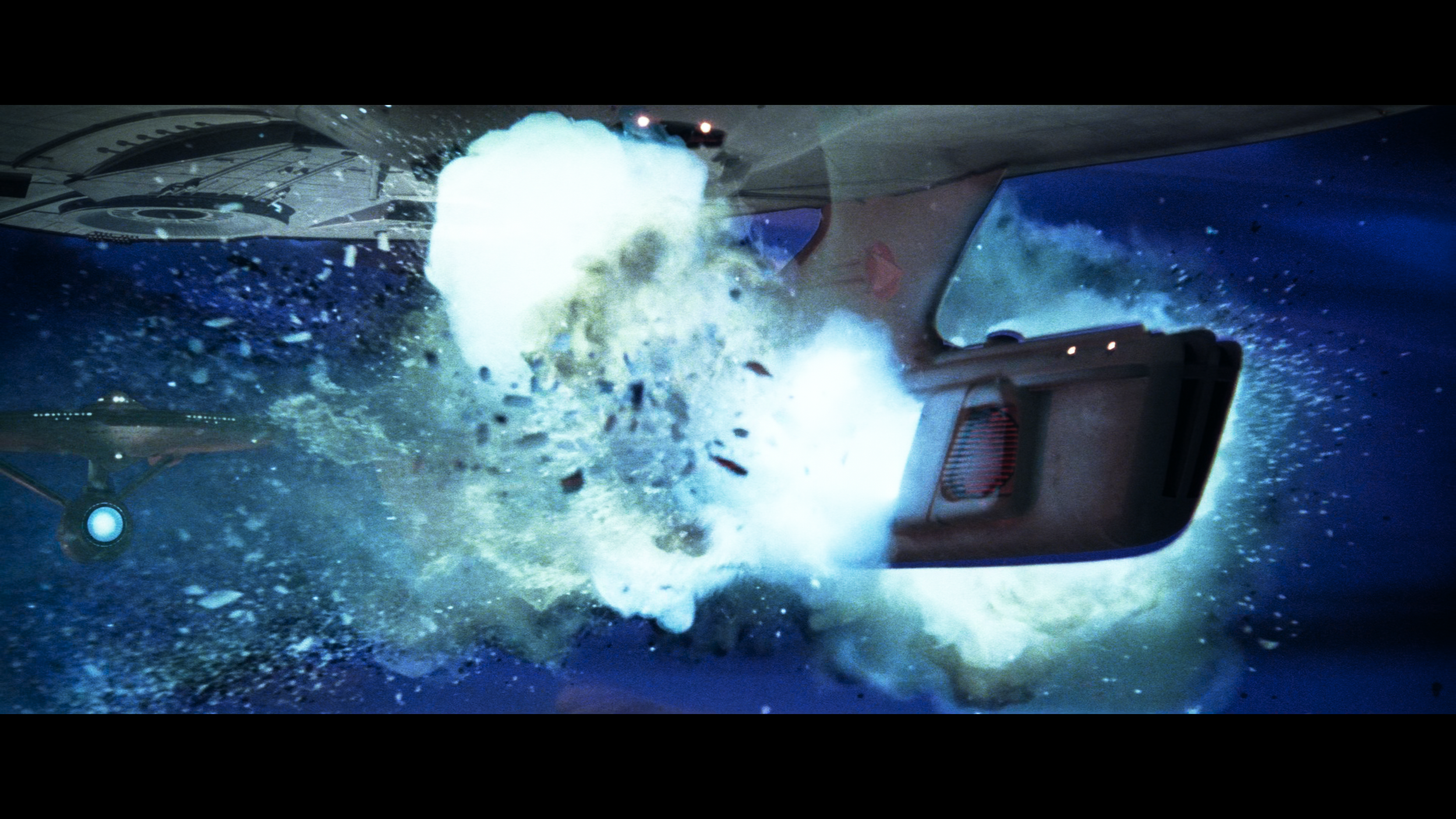Star Trek II: The Wrath of Khan (1982)
Revenge, as the saying goes, is a dish best served cold. In “Star Trek II: The Wrath of Khan,” Khan Noonien Singh (Ricardo Montalbán) delivers on that promise with icy determination. Nicholas Meyer crafts an intimate, emotionally resonant sequel that redefines the Star Trek franchise. But revisiting it has left me with a nuanced perspective: while it’s a high point, it also highlights the experimental ambition of its predecessor, “Star Trek: The Motion Picture.”
“Khan” trades the cosmic wonder of “The Motion Picture” for a leaner, military-action tone. The pacing is relentless, framing Kirk (William Shatner) and Khan’s rivalry as a strategic duel. While Robert Wise’s first film aimed for an operatic scale, with grand visuals and deep focus photography, “Khan” is more grounded. Though its visual effects are fantastic, including the groundbreaking CGI Genesis sequence, I found myself missing the ambition of the original film’s grand scope.
This is a film about aging, sacrifice, and legacy. From Kirk’s reflections on his career to his reunion with his estranged son, David Marcus (Merritt Butrick), it explores personal mortality. The Genesis device adds existential weight, representing both life and destruction. This duality finds its emotional crescendo in Spock's (Leonard Nimoy) sacrifice, embodying the theme: “The needs of the many outweigh the needs of the few.” It’s a profound moment that defines the film's philosophy.
Spock’s death is a reflection of Star Trek’s focus on collective good. In modern society, where individualism dominates, his selflessness resonates deeply. In contrast, Kirk’s ingenuity, both in defeating Khan and in the Kobayashi Maru test, underscores Star Trek’s celebration of intellect over brute force. Together, they elevate the story into a meditation on responsibility and intelligence.
One of “Khan’s” triumphs is how it balances emotional stakes with intellectual ideas. Kirk’s dual challenges, reconnecting with his son and battling Khan, add depth to the space battles, particularly the tense Mutara Nebula sequence. Montalbán’s theatrical portrayal of Khan, driven by vengeance, creates a villain both tangible and human. Unlike the abstract threats of “The Motion Picture,” Khan’s vendetta gives the conflict real weight. It’s perhaps why this film resonates so powerfully.
James Horner’s score is masterful, amplifying the film’s emotional and dramatic stakes. Following Jerry Goldsmith’s iconic “Motion Picture” score, Horner creates a soundscape perfectly suited to the film’s naval tone. The swelling brass and strings heighten tension in climactic moments, particularly Spock’s death, while the nautical themes mirror the tactical battle between Kirk and Khan.
“The Wrath of Khan” succeeds within the context of a historic year in sci-fi/fantasy. In 1982, where “Blade Runner,” “E.T.,” “Poltergeist,” “The Road Warrior,” and “Conan,” were released, “Khan” carved its niche by blending emotional intensity with genre thrills. Yet revisiting it has made me reconsider ”The Motion Picture.” Though its narrative stakes weren’t as high, its ambition, helmed by Wise and Richard Kline, feels more singular. For all “Khan’s” brilliance, the first film’s audacity deserves its own recognition.
“The Wrath of Khan” remains a classic for its emotional weight, action, and performances. Revisiting it has reminded me of its brilliance while sparking new appreciation for “The Motion Picture.” If “Khan” brought Star Trek back to its roots with its focus on humanity and sacrifice, the first film sought to expand its boundaries. Together, they show the franchise’s extraordinary range.








